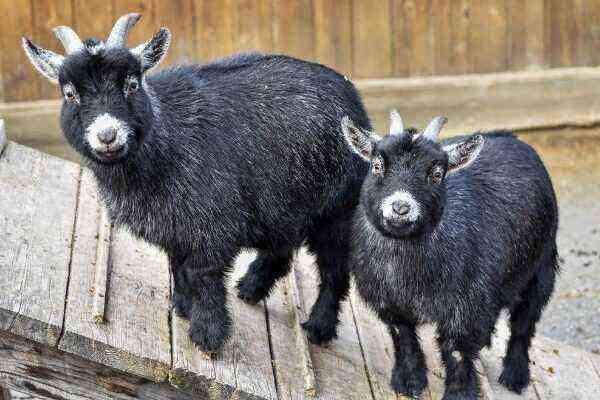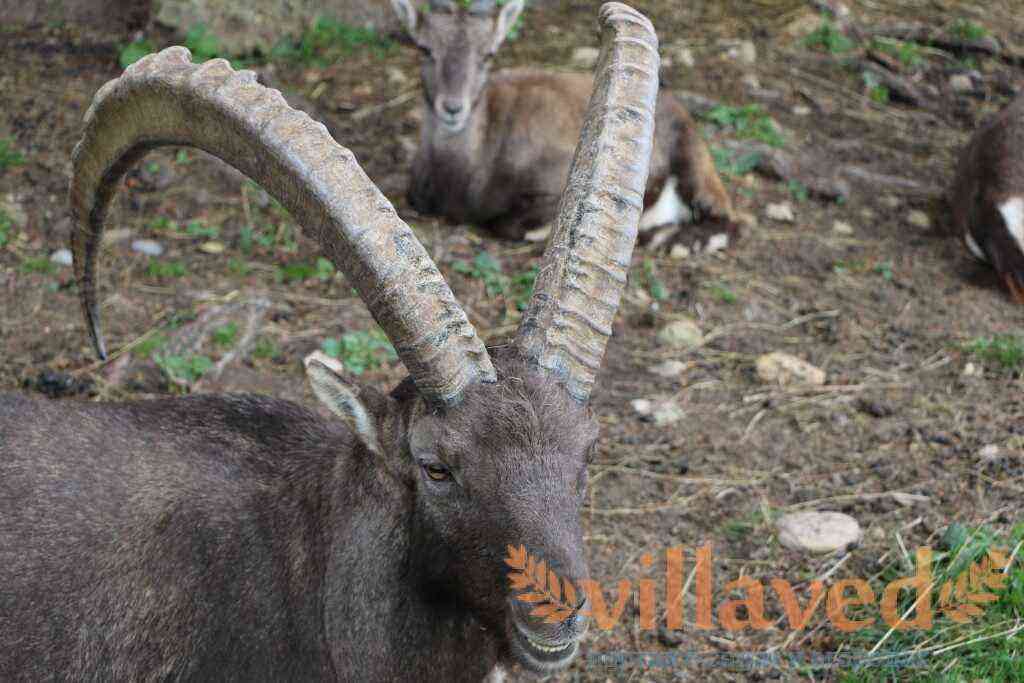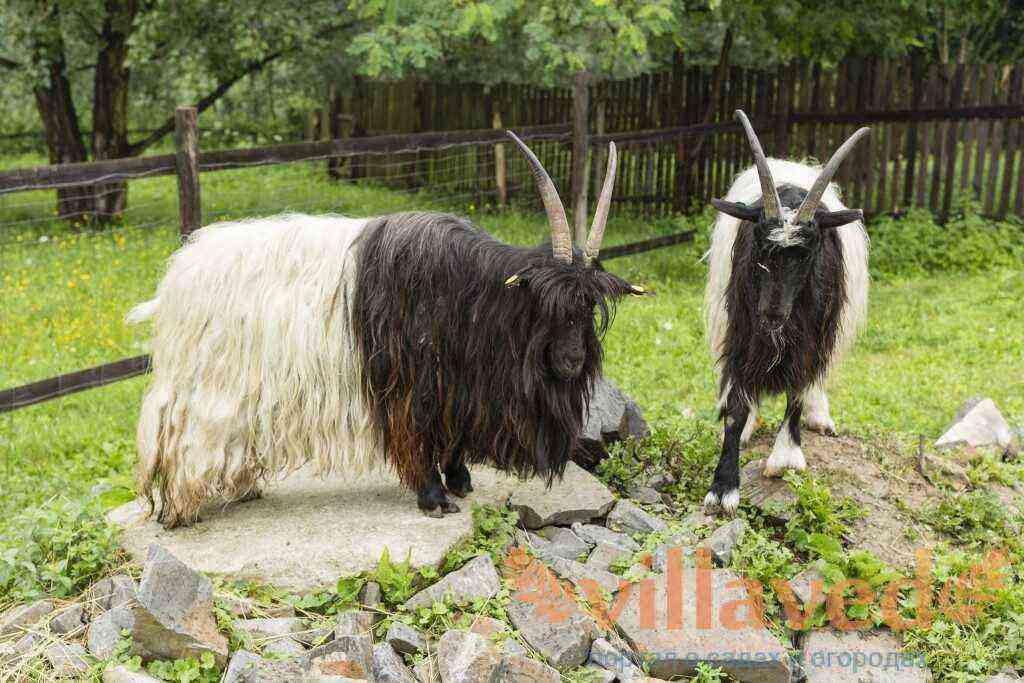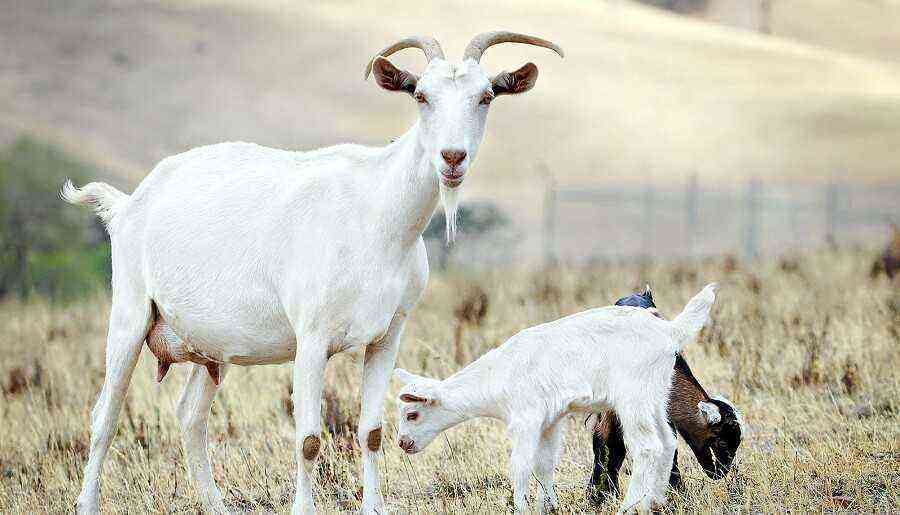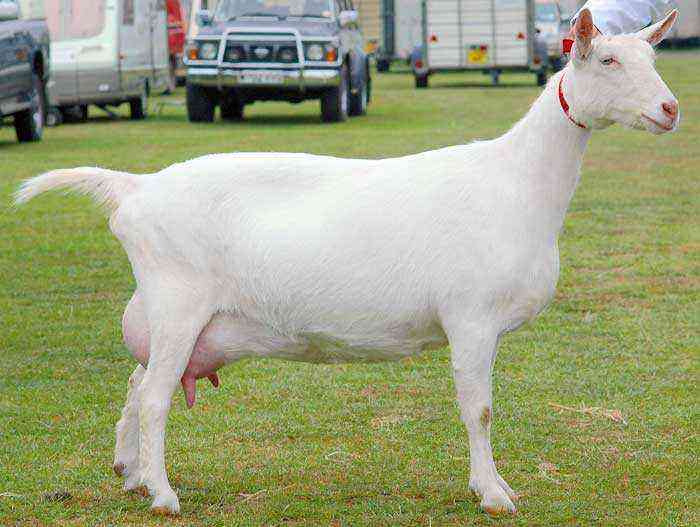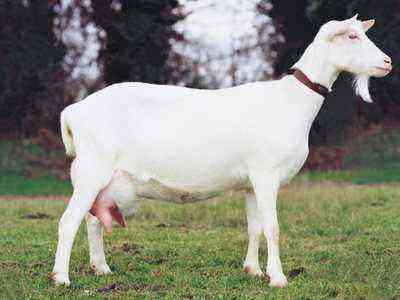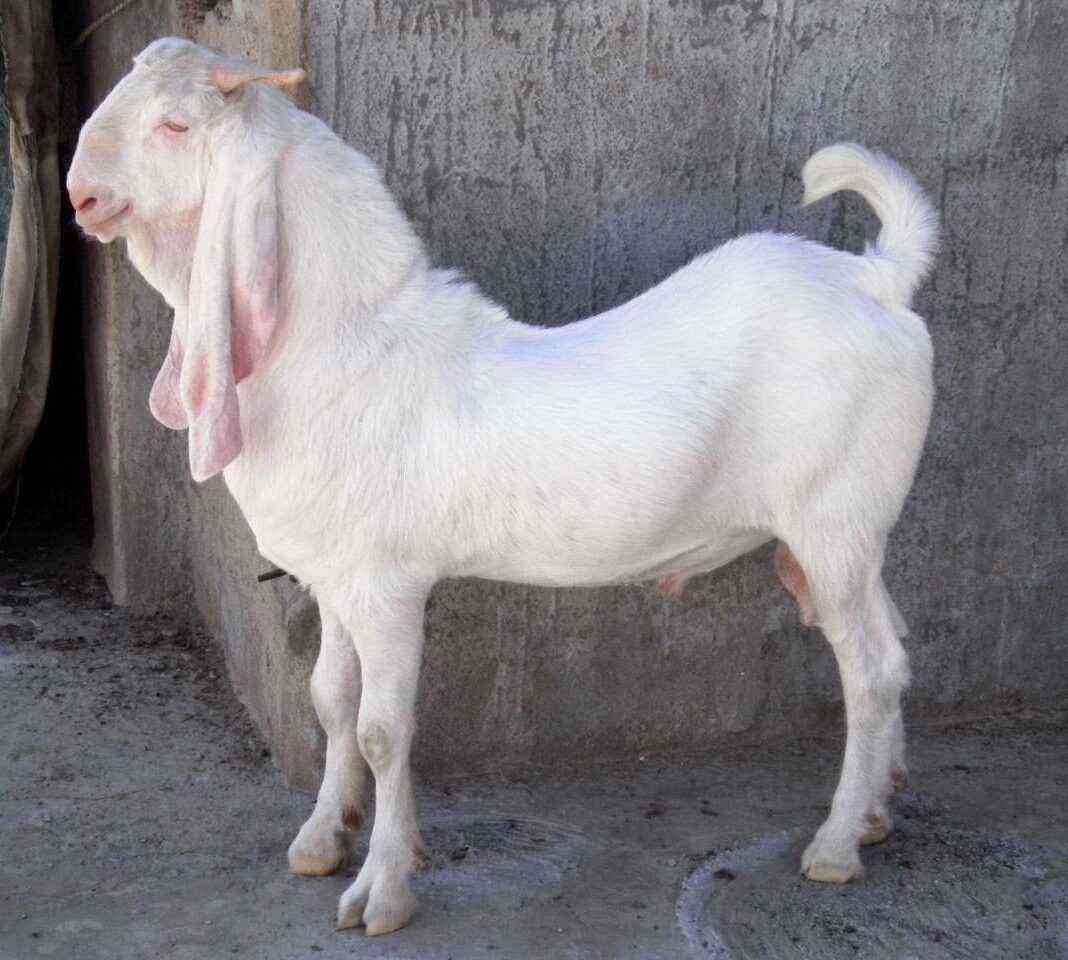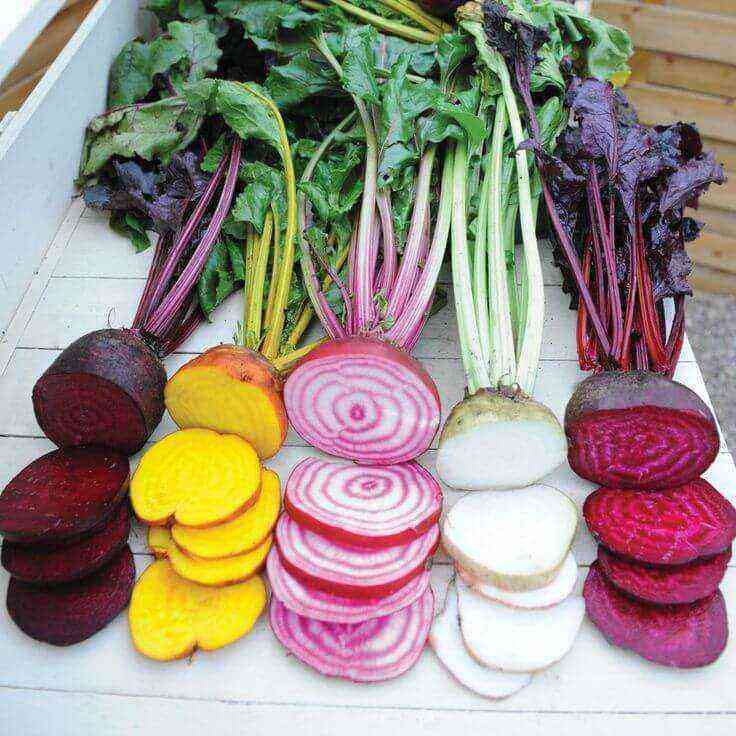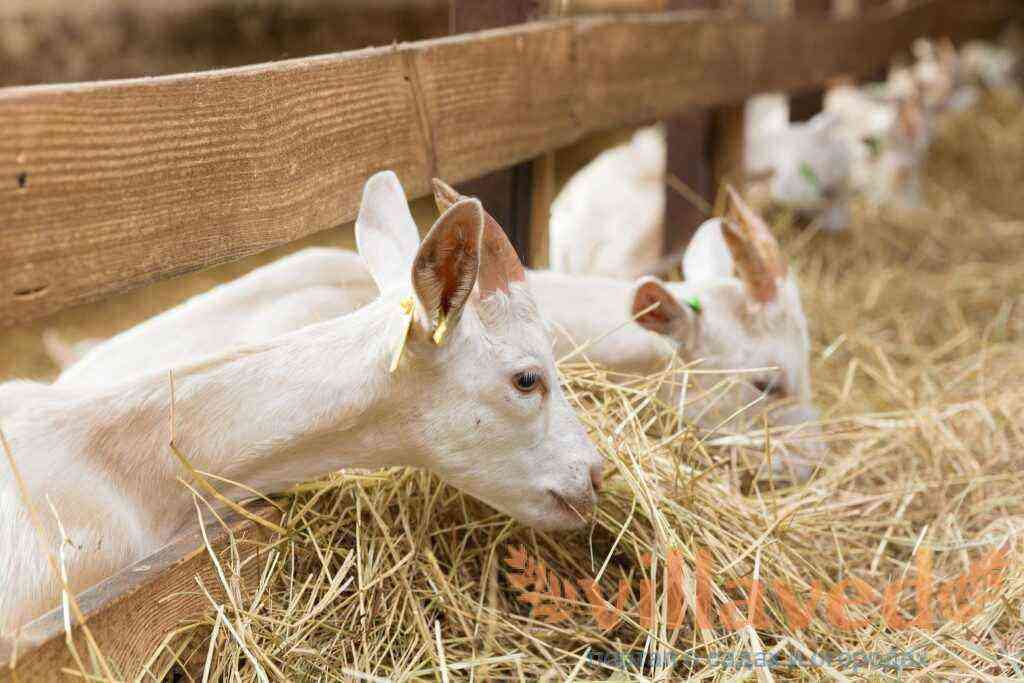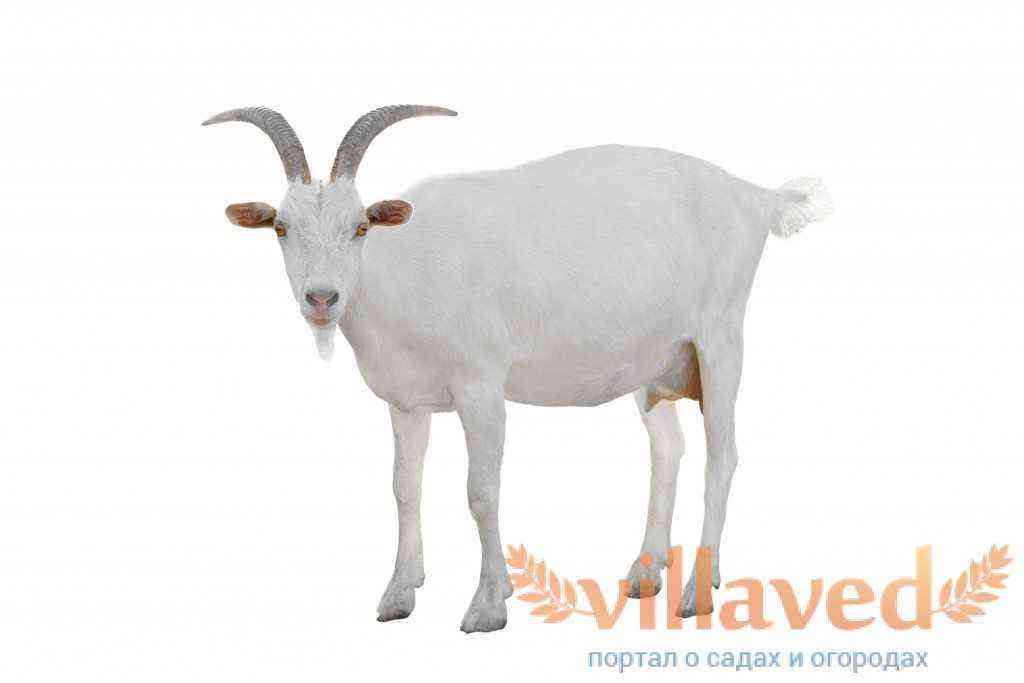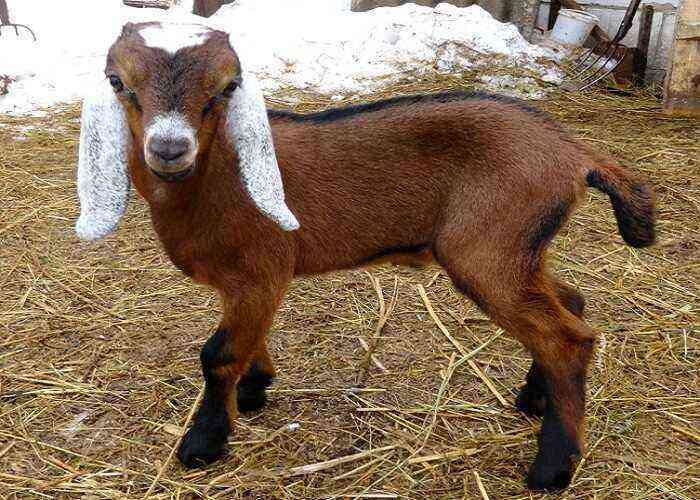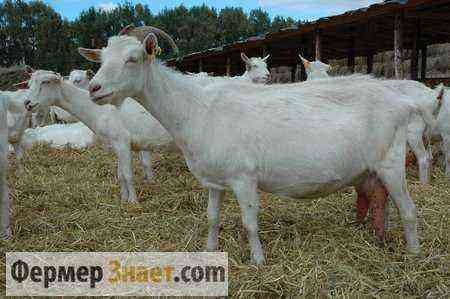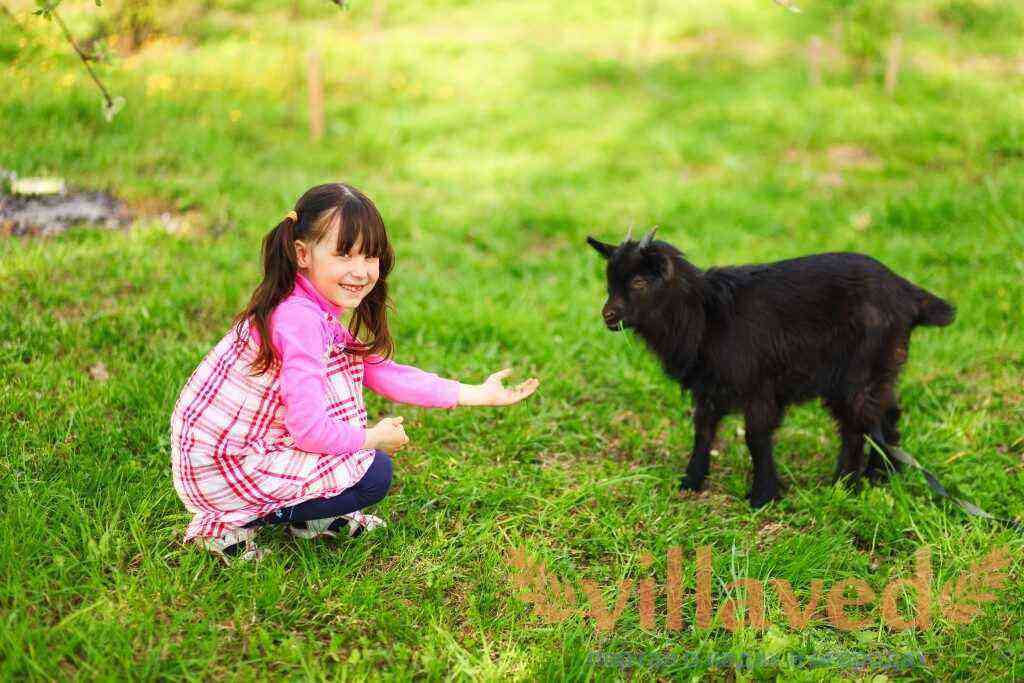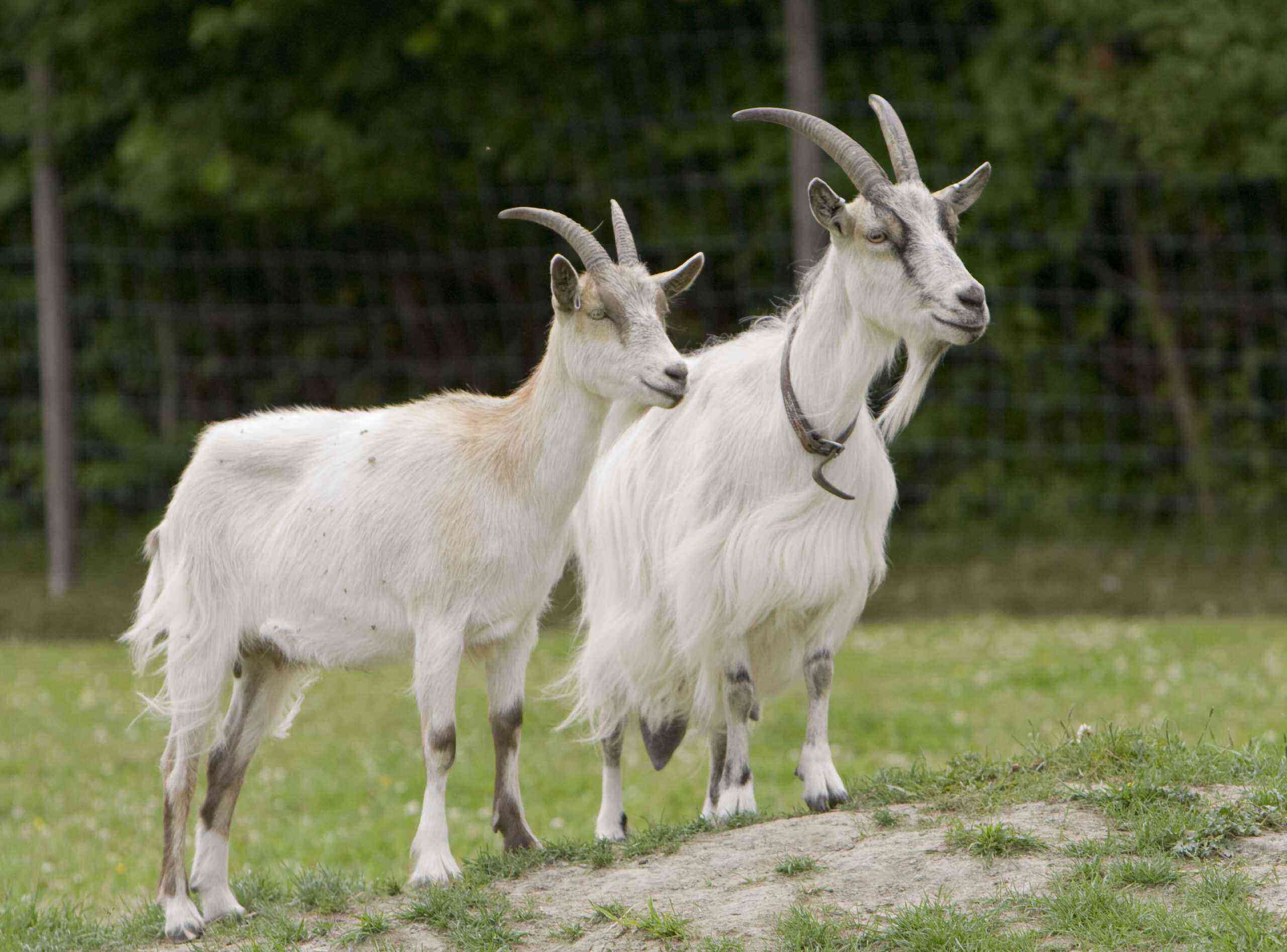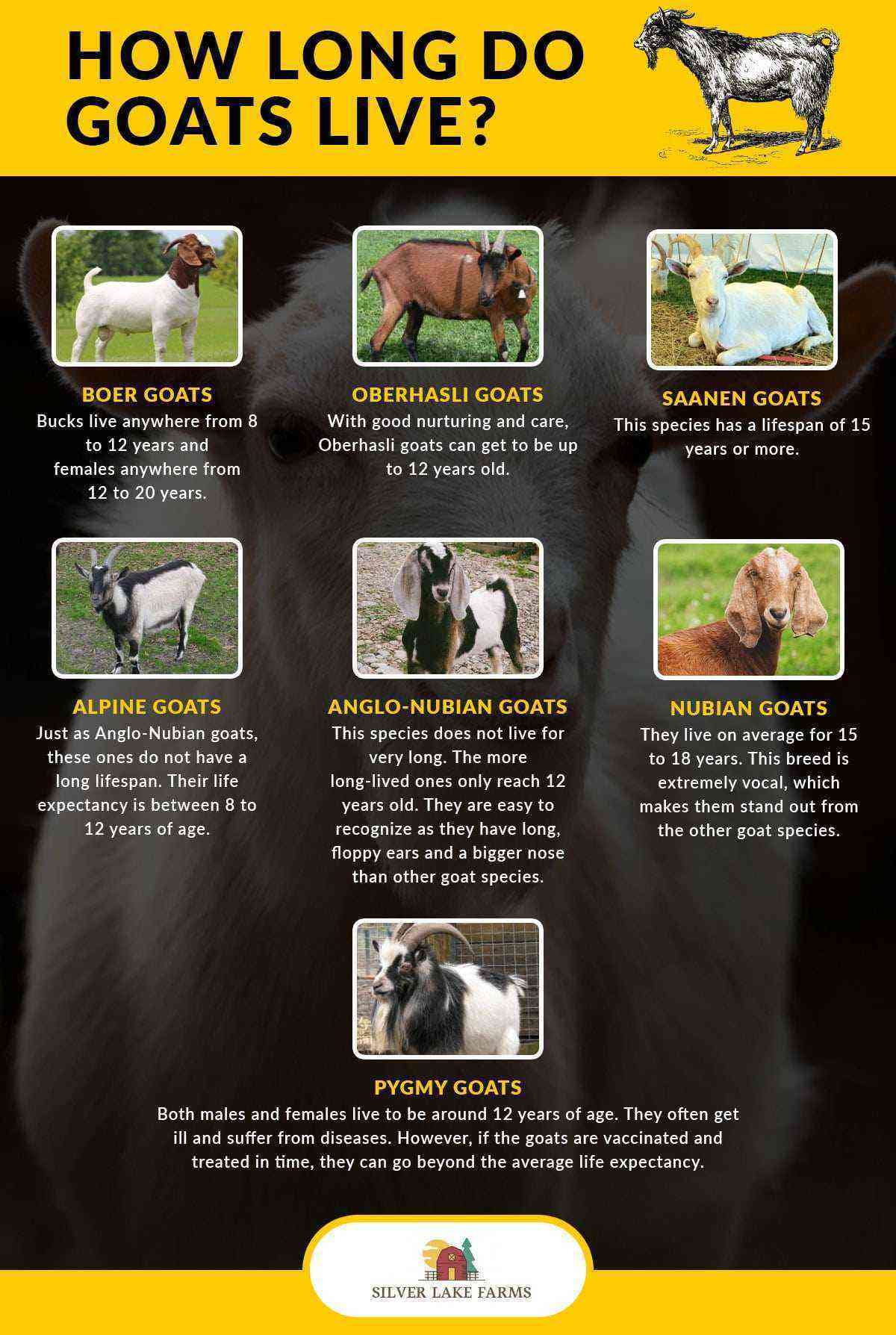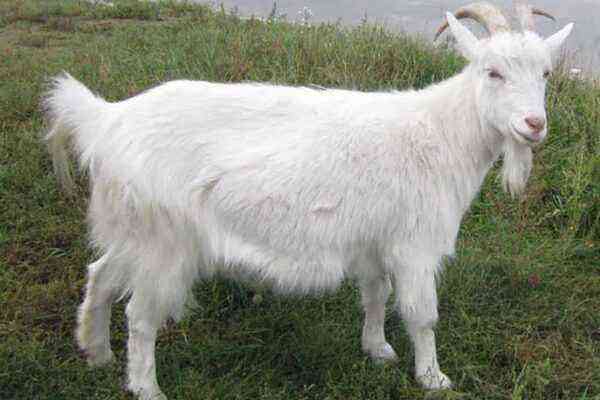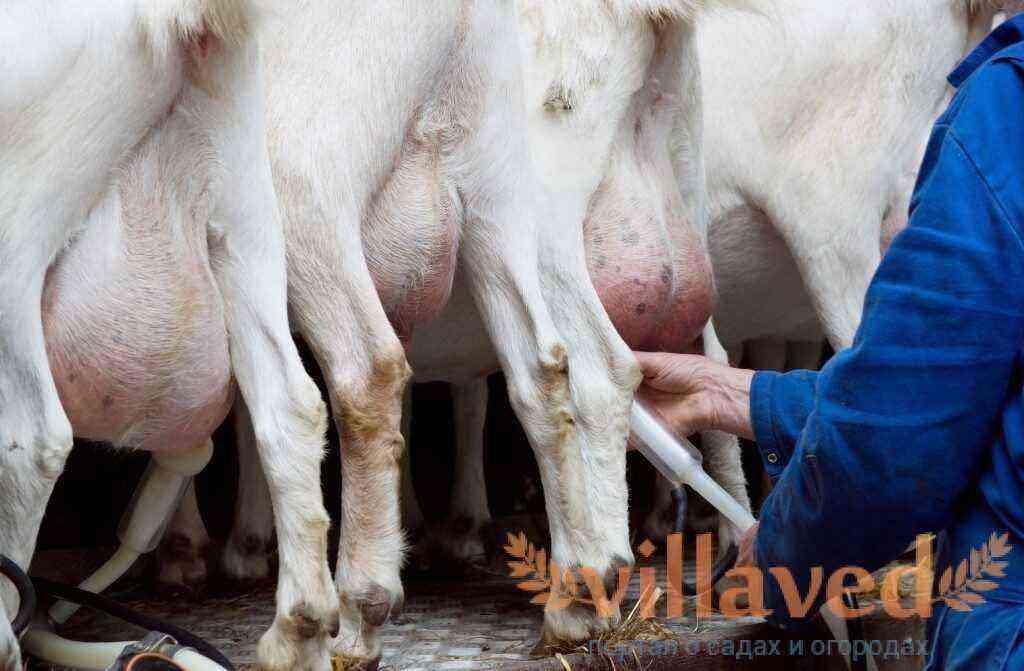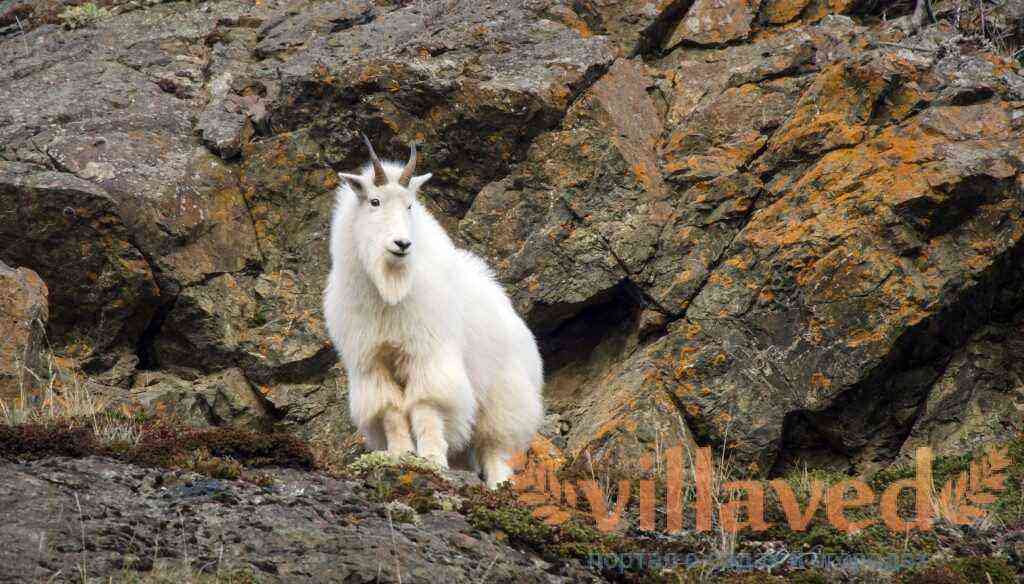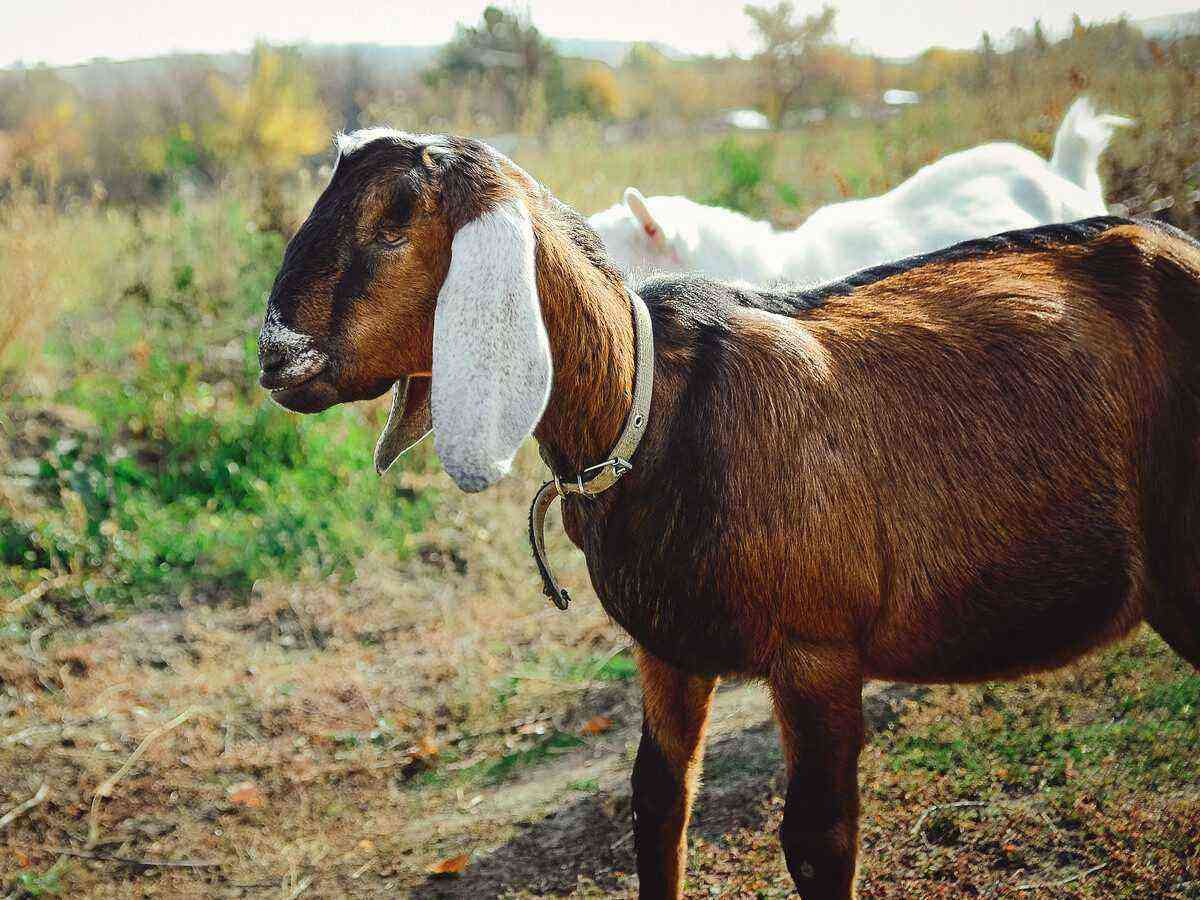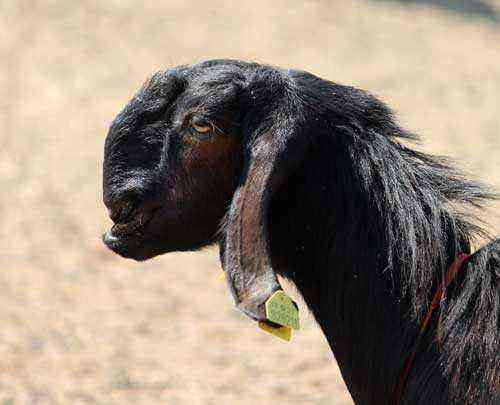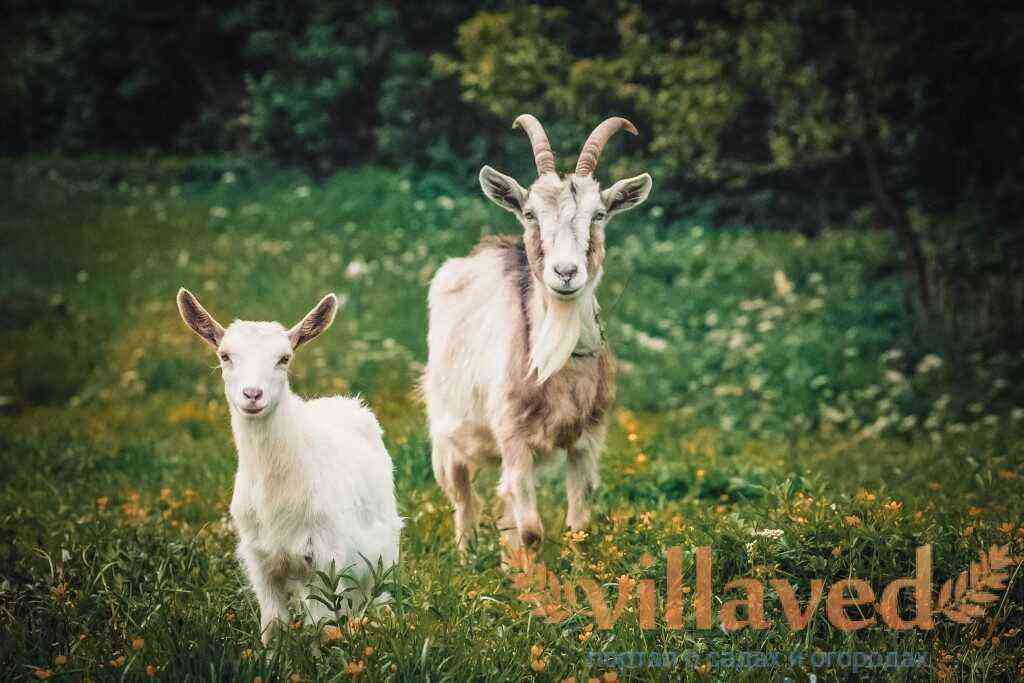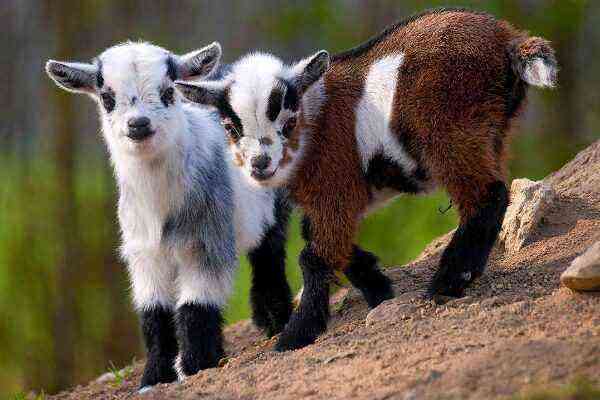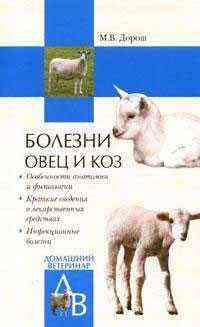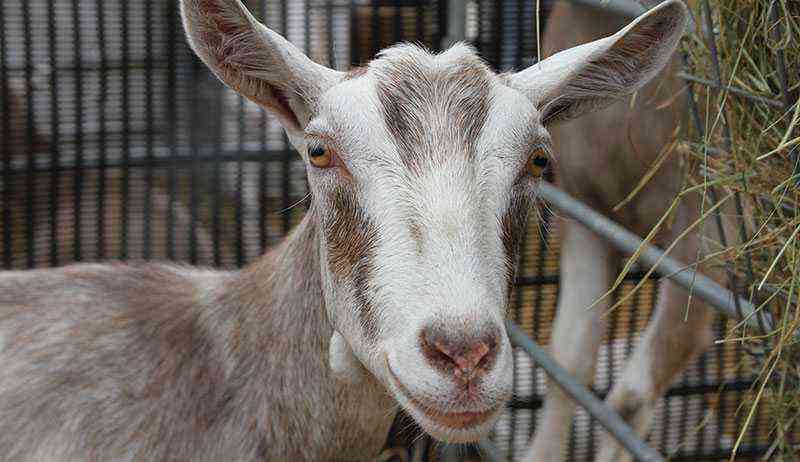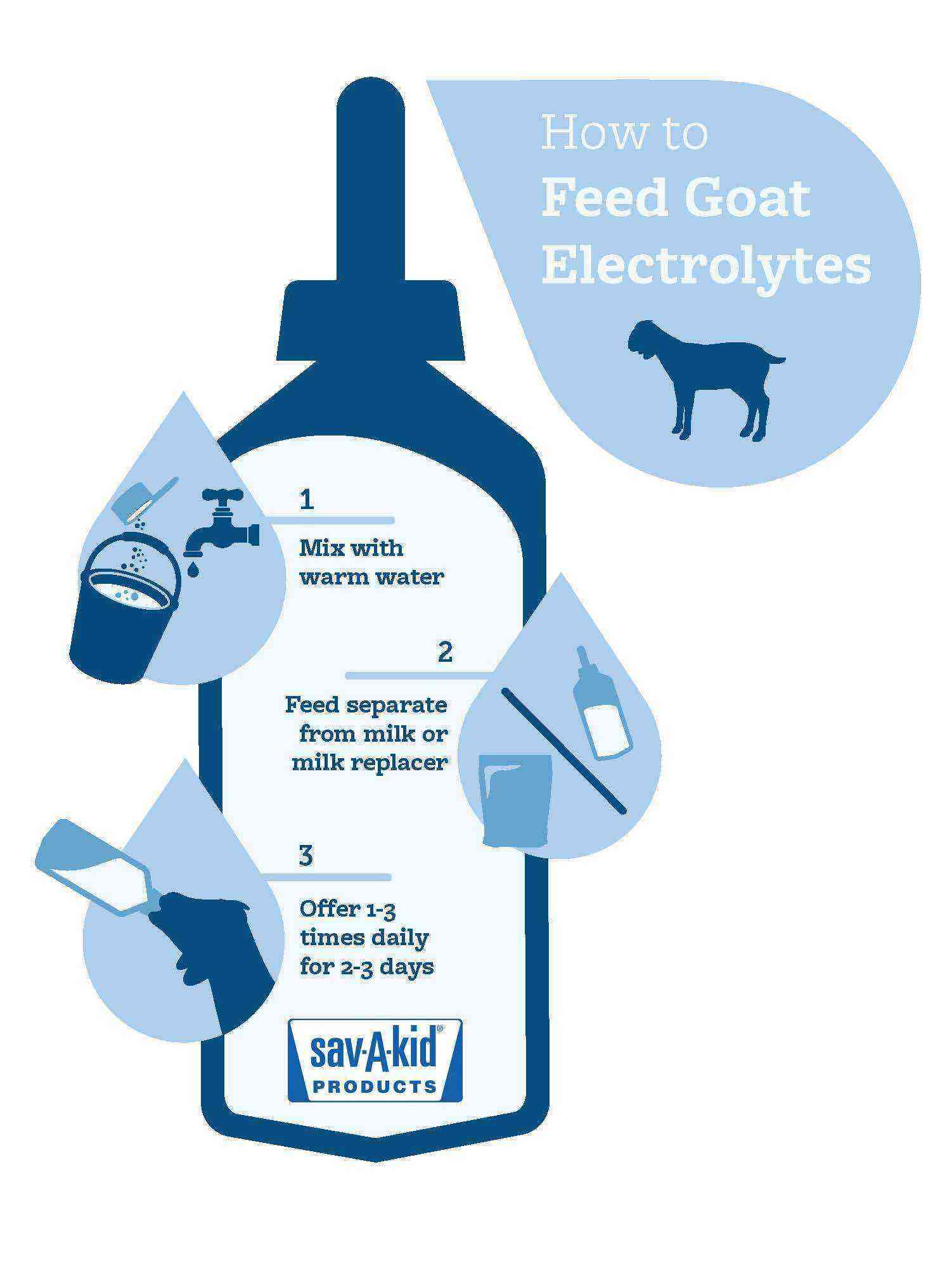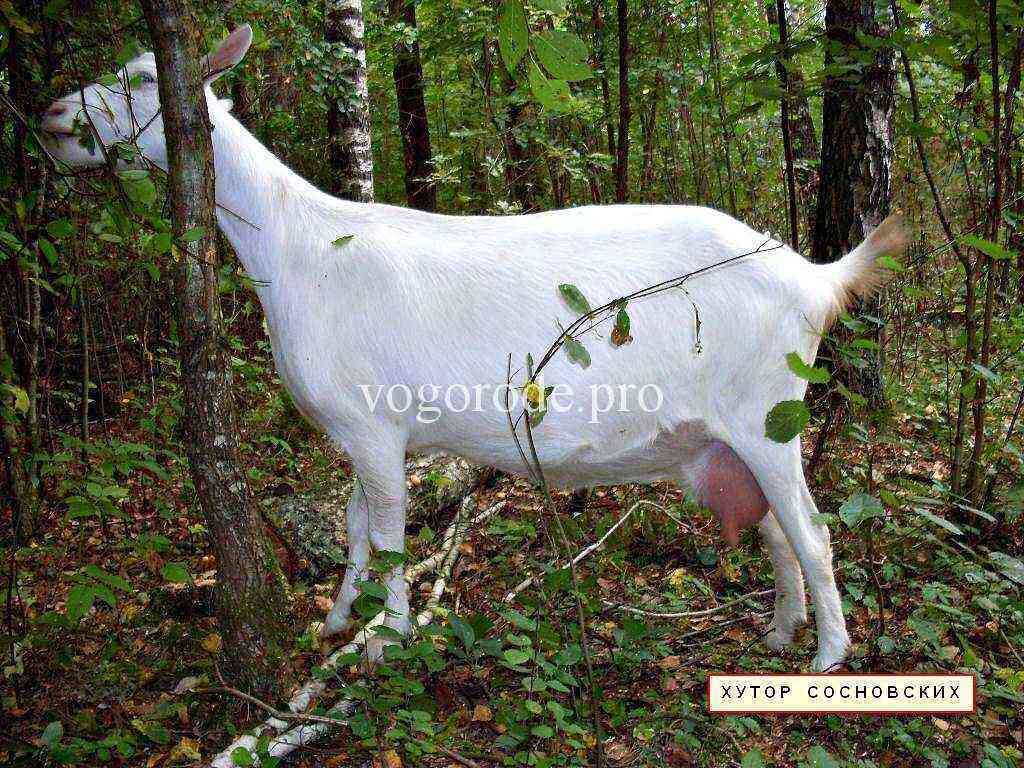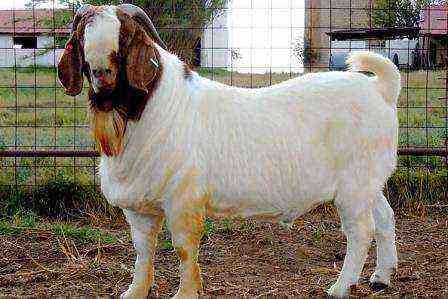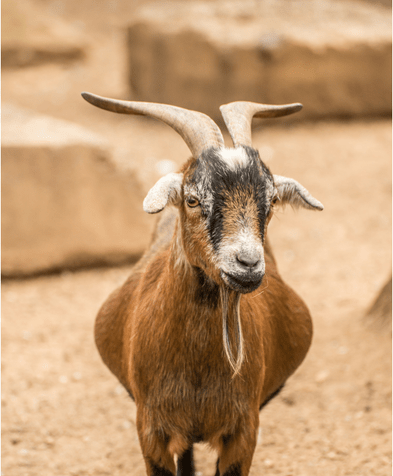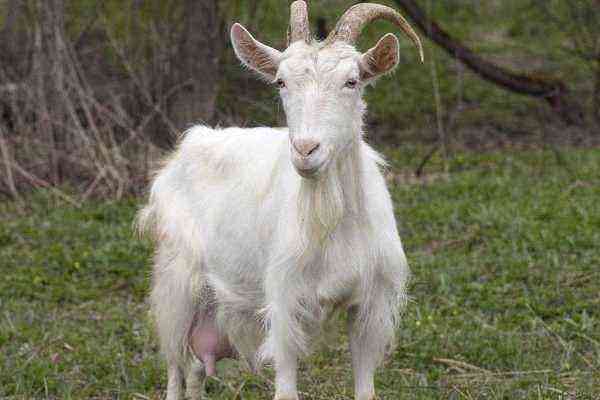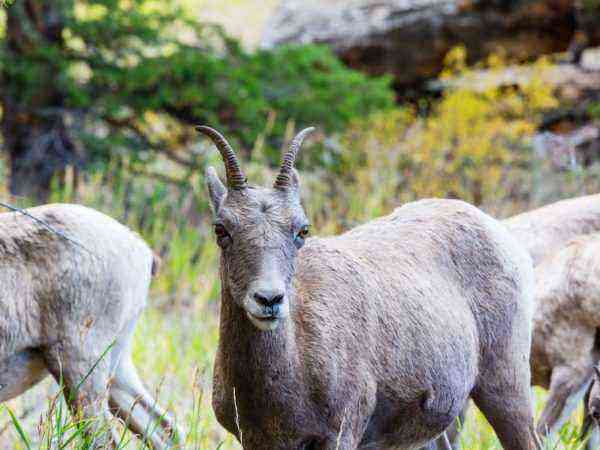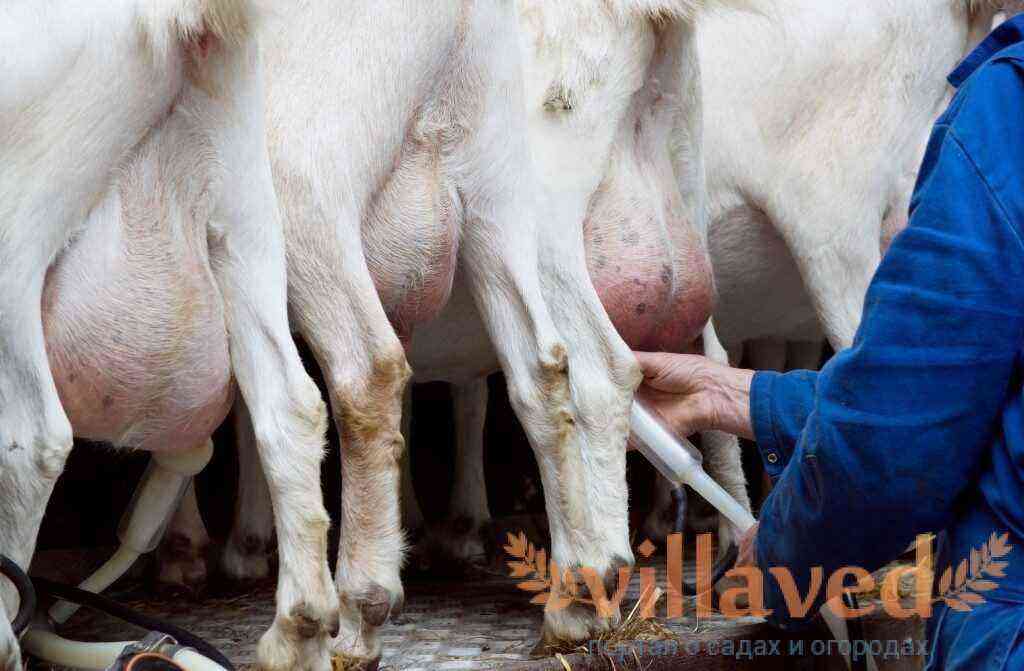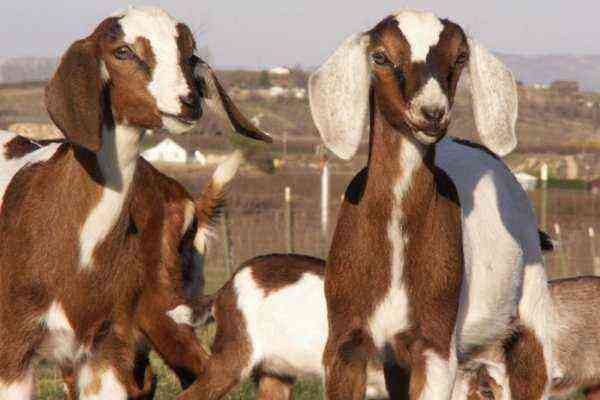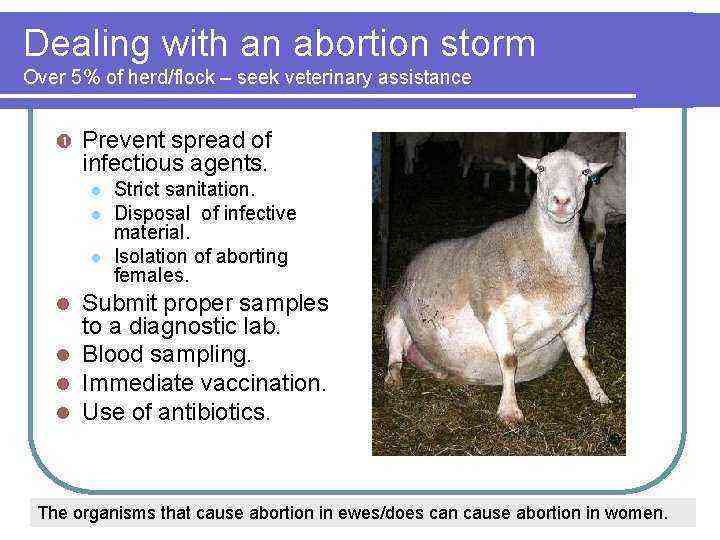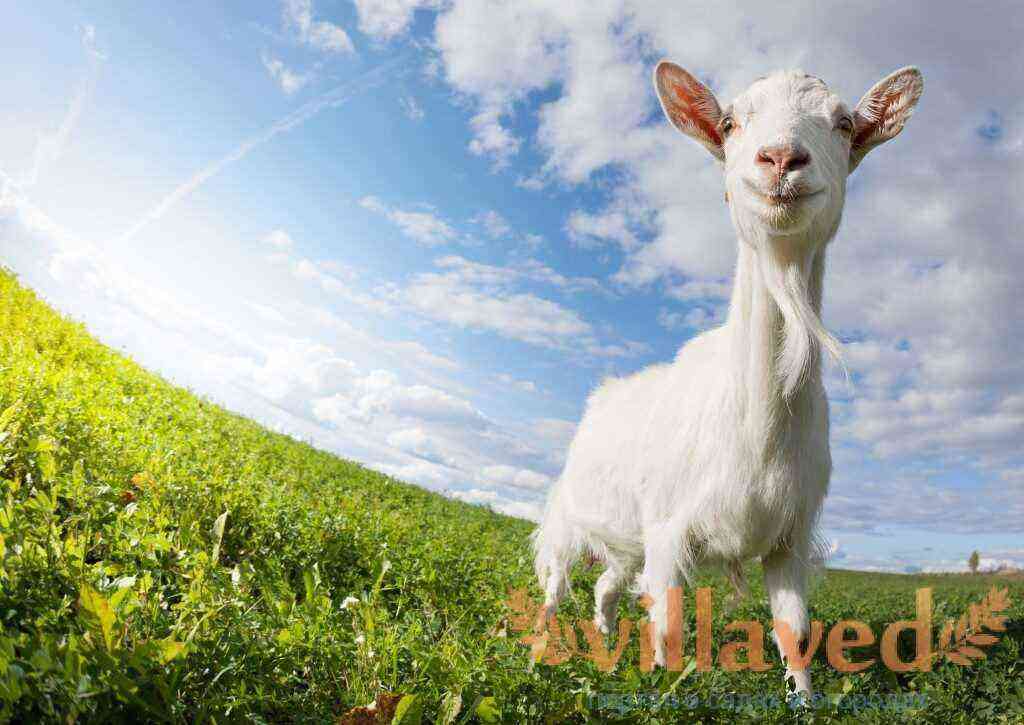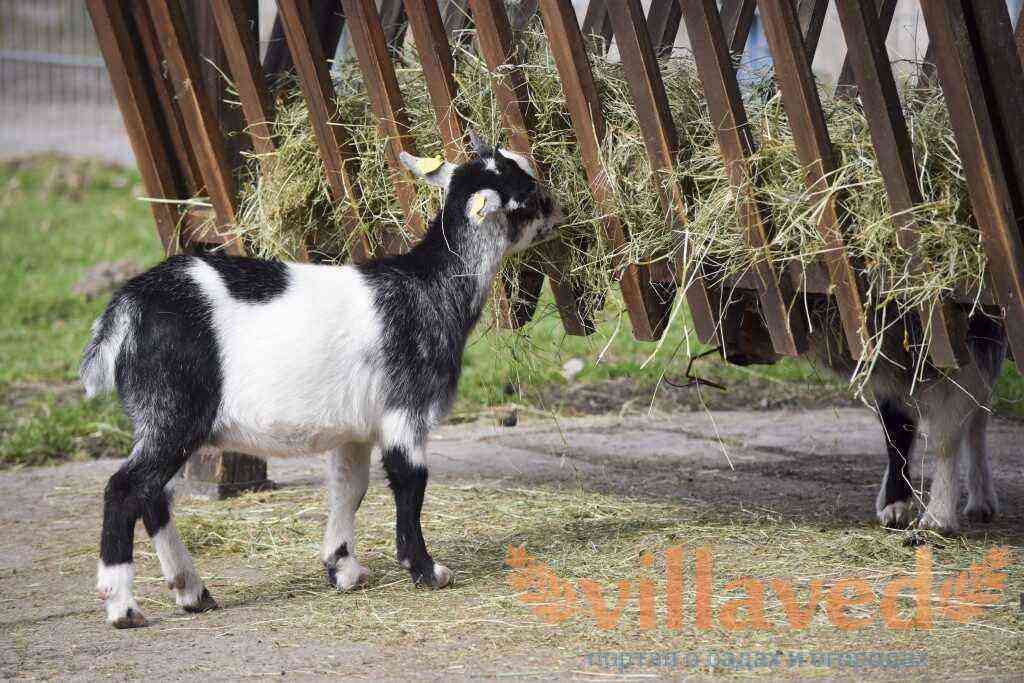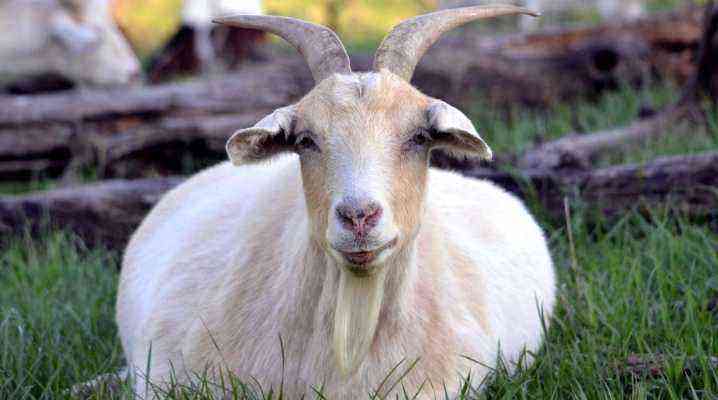When buying goats for breeding, first decide on the ultimate goal. What is the animal for? There are several options. Some breeders focus on meat breeds, others are more interested in indicators of milkiness or wool. The article describes popular breeds for various purposes, the relevance of their acquisition.
Dairy breeds
If the breeder is counting on tasty, fresh milk, he will have to decide on the dairy breed of goats. The main evaluation criteria are high milk yields, unpretentiousness in care and maintenance, the absence of a specific smell from a pet and its products. Below are the most popular breeds.
Scientists claim that goat’s milk eliminates the symptoms of poisoning, treats allergies, accelerates the positive dynamics in tuberculosis. In addition, it is a reliable protection against the effects of radiation.
Zaanenskaya
It is a European goat breed native to the Swiss Alps. Polled animals at the withers reach 85 cm, weigh 75-80 kg. There are cases when the weight of Zaanenko goats reached 90 kg. Representatives of the breed have a proportional body, wide-set limbs, a short tail, erect ears. The color of the short coat is snow-white, cases of the appearance of black spots are not excluded.
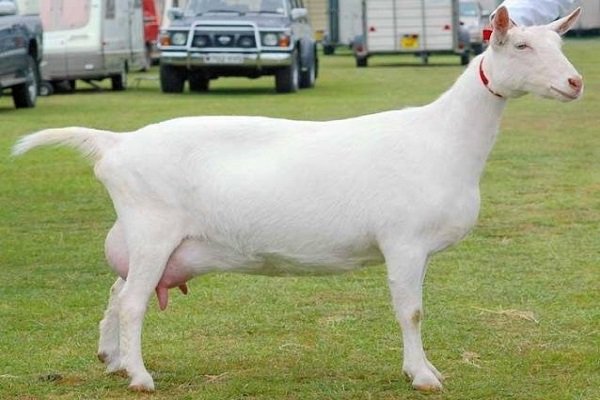
On average, a goat produces up to 700 kg of milk per year with a fat content of 3,5-7%. Record annual milk production is known – 2 kg. A goat is born 000-2 cubs at a time, which is considered a high fertility rate.
Advantages:
- lactation all year round;
- lack of a specific smell from milk;
- high fertility, productivity;
- strong immunity.
Disadvantages:
- capriciousness to living conditions;
- high price;
- cold intolerance.
Megrelian
Goats are native to Georgia. A distinctive feature of the breed is its compact size. At the withers, the animal reaches 60 cm, weighs no more than 30 kg. The dwarf goat has a powerful chest, a long body, erect ears, an elongated muzzle, and a short tail. The animal is short-haired, the color of the fur is all shades of brown. There are also white individuals.
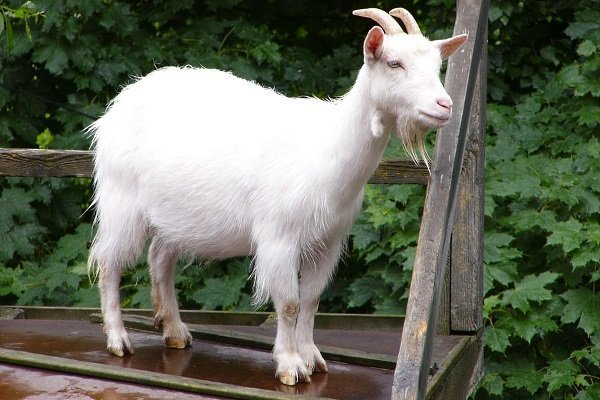
During the lactation period (200 days), Megrelian goat gives 350 liters of odorless milk of 3,2% fat. In winter, milk production decreases, which is due to the peculiarities of nutrition. In lambing, the female brings up to 2 kids.
Advantages:
- strong immunity;
- good adaptive performance;
- high viability;
- odorless milk;
Disadvantages:
- moderate milk yield;
- high price of the breed;
- the complexity of the purchase.
Toggenburgskaya
Another goat breed comes from Switzerland. The animal belongs to the meat and dairy breed – in addition to milk, it provides the breeder with tasty, dietary meat. These are smooth-haired, polled goats with erect ears, an elongated muzzle and a beard (in males). At the withers, animals reach 70 cm, weigh 50 kg.

Toggenburg goats are brown with white accents, and there are also long-haired varieties of the breed. The milk yield is 500-1000 liters per year. Milk has no specific smell.
Advantages:
- high milk yield;
- strong immunity;
- good adaptability.
Disadvantages:
- high price;
- the complexity of the purchase.
Russian white
This is a European dairy breed with high productivity. Goats have a massive body, short legs, ears set apart, and short white hair. There are individuals with horns and a beard, or polled. At the withers, the animal reaches 60 cm, weighs up to 30 kg.

The Russian white goat is known for high milk yields. During the lactation period, you can get up to 800 liters of milk with a fat content of 5-6%. Daily milk yield – 3-5 liters.
Advantages:
- high fertility;
- valuable skin;
Disadvantages:
- degeneration of the breed;
- conflict nature in goats;
- the risk of morbidity.
Gorkovskaya
These are European goats – a mixture of Saanen and Toggenburg breeds. Animals have a compact body, well-developed muscles, small horns and tail, and wide-set limbs. Like their parents, Gorky goats are richly white, up to 70 cm at the withers, and weigh 50-60 kg.
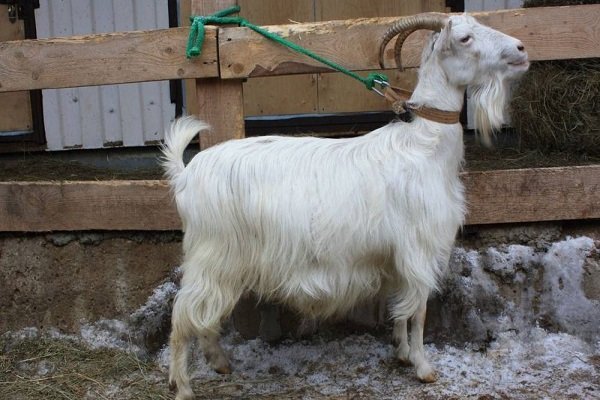
Milkiness indicators are moderate. During the lactation period, a goat gives 500-600 liters of milk with a fat content of 5%. The value of the product lies in the absence of a specific smell, high concentration of protein in 100 g of the product.
Advantages:
- fast acclimatization;
- aesthetics of the breed;
- strong immunity;
Disadvantages:
- moderate milkiness;
- heat intolerance;
- danger of ticks, fleas, other parasites.
lamancha
The historical homeland of La Mancha is Ancient Persia. A distinctive feature of animals is the absence of ears, which gives them an unusual, decorative look. Goats have a strong build, an extensive range of colors, including spotting. At the withers, Lamancha reaches 95 cm, weighs up to 65 kg.
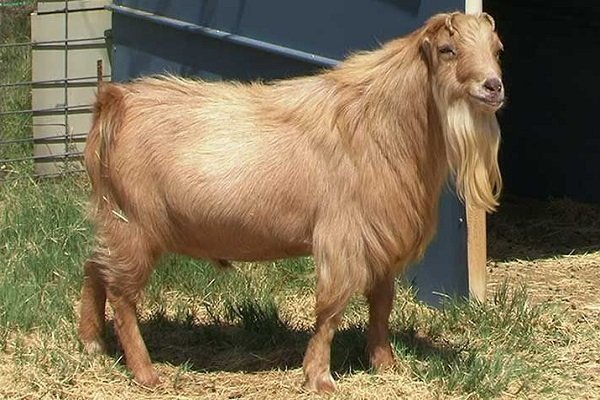
For a day, a goat gives up to 8 liters of milk with 5-6% fat content. Lamancha has tender, dietary meat, in lambing – up to 4 cubs. Breeding such a breed of goats is cost-effective, difficulties arise with the conditions of care and maintenance.
Advantages:
- high fertility;
- strong immunity;
- decorativeness of the breed;
- high milk yield;
- fatty milk.
Disadvantages:
- the complexity of the purchase;
- high price;
- delicacy in care.
Alpine dairy
This breed of dairy goat comes from France. Animals of large sizes, reach 90 cm at the withers. Females weigh 60 kg, males – 80 kg. These polled goats have an attractive color – unevenly distributed all shades of brown up to black.
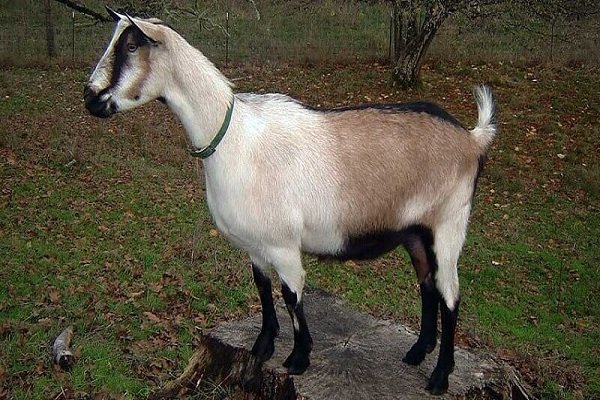
Alpine goats give 700-800 liters of milk without a specific smell per year, but record holders are also known – up to 1000 liters. The fat content of the product is 4-7%, depending on the characteristics of nutrition.
Advantages:
- excellent exterior;
- high milk yields;
- frost resistance;
- complaisant character;
- disease resistance.
Disadvantages:
- sensitivity to low-quality water;
- high price;
- the complexity of the purchase.
Cameroonian
This is a dwarf goat breed. At the withers, animals reach 45 cm, females weigh up to 15 kg, males – 25 kg. In purebred individuals, the coat is light brown with darkening in different parts of the body. There are also black Cameroon goats.

For a day you can get 2 liters of milk with a fat content of up to 6%. There is no specific smell, but the usefulness of the drink is difficult to overestimate. The composition of milk contains phosphorus, calcium, potassium, iron.
Advantages:
- compact size;
- calm character;
- strong immunity;
- high yields.
Disadvantages:
- intolerance to dampness, drafts;
- aggression in a stressful situation;
- longing when growing alone.
Czech brown
This is the most popular breed in Russian agriculture. Goats tolerate cold well, productivity does not decrease when climatic conditions change. The young are rapidly gaining weight. Czech brown goats are used to obtain not only fatty milk, but also meat products.
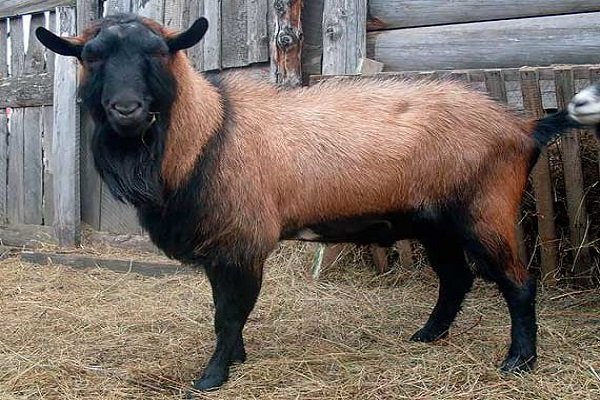
The daily milk yield is from 3 to 5 kg with a fat content of 5-6%. The milk production of the Czech breed is maintained all year round, depending on the conditions of keeping and feeding habits of goats.
Advantages:
- high productivity;
- nutritious milk, dietary meat;
- balanced character;
- high intelligence in an animal.
Disadvantages:
- heat intolerance;
- the danger of harmful insects;
- the risk of morbidity.
Malaguena
A rare goat breed obtained by crossing the Maltese and Pyrenean breeds. The height of animals at the withers reaches 75 cm, weight – 65-80 kg. Malaguena shorthaired, brown with horns and horned.
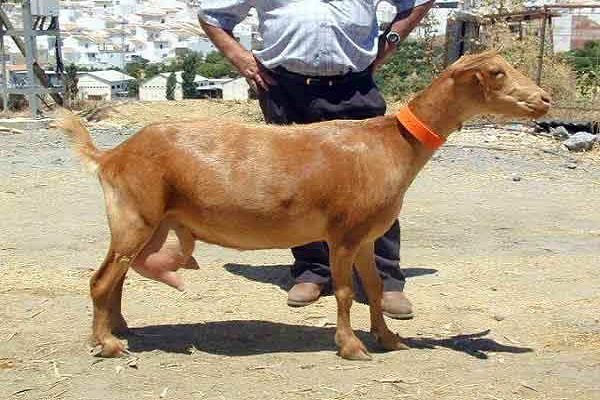
The lactation period lasts 310 days. Milk yields are 1350 kg per year. Healthy milk, fat content – from 4 to 7%. Goats have high fecundity – up to 4 kids per 1 lamb.
Advantages:
- aesthetics of the breed;
- ease of care;
- high productivity rates;
- strong immunity;
- fast acclimatization.
Disadvantages:
- the complexity of the purchase;
- high price;
- little information about the breed.
Comparison table of dairy goats
When choosing dairy goats, pay attention to such indicators of milk production. Of great importance is not only the annual level of milk yield, but also the fat content of milk, the usefulness of a natural product.
Breed Daily milk yield, l Annual milk yield, l Milk fat content, % Nubian
4-5
1 000
4-7
Gorky
3
600
3,5
Russian
2-3
500
3-4
Cameroonian
2
300
1,5
Czech
5-6
1 200-1 300
4,5
Lamancha
3-5
900
4-6
Toggenburg
2-3
600
3-4
We recommend that you see an overview of the best breeds of dairy goats in this article.
Downy
These are goats whose breeding is necessary to obtain fluff. Animals have coarse hair, thick and soft undercoat. It is from it that yarn is made for shawls, scarves, and other wardrobe items. Other productivity indicators are negligible: small offspring, low meat yield and low-fat milk.
Orenburg
Long-haired goats come from the Southern Urals. Animals differ in large sizes: the weight of the female is from 45 kg, the male is from 75 kg. Black Orenburg goats are more common, less often – red and gray.
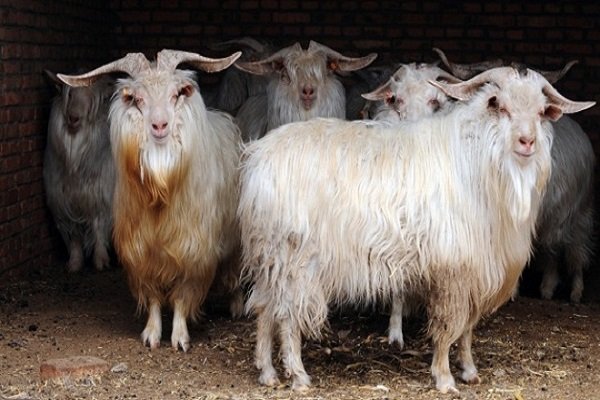
Thanks to warm down, animals are frost-resistant, quickly adapt to low temperatures, which does not affect their high fertility. From one goat you can get up to 600 g of high quality down.
Advantages:
- high productivity;
- good adaptive performance;
- aesthetics of the breed;
- fast growth;
- strong immunity.
Disadvantages:
- heat intolerance;
- tendency to poisoning;
- decrease in the quality of fluff in tight quarters.
Gornoaltayskaya
The goat comes from Altai, adapted to harsh climatic conditions. The animal has a proportional body, well-developed muscles and a uniform (brown) color. At the withers, goats reach 65 cm, weigh up to 40 kg.
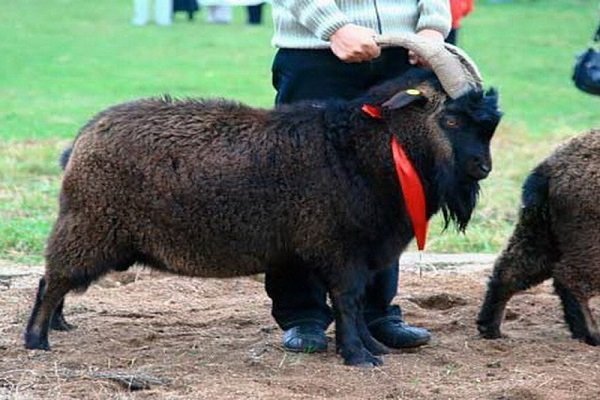
From one goat, you can collect 750-1 g of high quality down, from a goat – 000-550 g. The product is soft, pleasant to the touch. Warm scarves and shawls, heaters for clothes are made from fluff.
Advantages:
- esthetic look;
- high productivity;
- frost resistance;
- strong immunity;
Disadvantages:
- heat intolerance;
- dependence of the quality of fur on the conditions of detention;
- high price.
Pridonskaya
The goat was bred in the steppe regions of the Don. Outwardly, this is a small animal with long fur (9-12 cm) in white or gray. At the withers, the Pridonskaya goat reaches 70 cm, males weigh from 70 kg, females – about 40 kg.
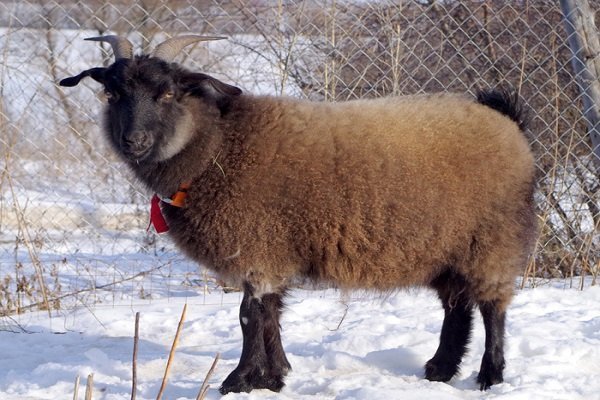
Animals are prolific, up to 3 kids are born. From one goat, you can get from 400 to 1,5 kg of soft and elastic fluff, depending on gender, conditions of detention, and feeding habits.
Advantages:
- high productivity;
- fast growth;
- complaisant character;
- frost resistance;
- outward attraction.
Disadvantages:
- complexity of care;
- dependence of the quality of fur on the conditions of detention;
- the risk of morbidity.
Angora
This curly-haired goat is native to the Central regions of Turkey. An adult male at the withers reaches 75 cm, weighs up to 50 kg. There are white, gray, brown and silver individuals with hanging ears and horns directed to the sides.
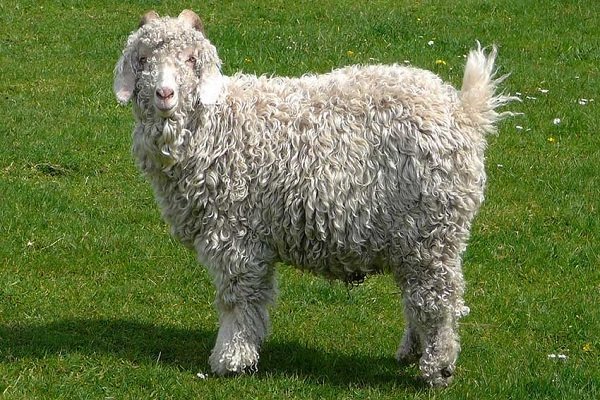
Angora goats have soft, shiny and pleasant to the touch hair 25 cm long. The yield of wool from an adult reaches 6 kg. Animals are sheared 2 times a year. If you skip the cutting time, the quality of the fluff drops.
Advantages:
- aesthetics of the breed;
- a large amount of fluff;
- high fertility;
- frost resistance;
- complaisant character.
Disadvantages:
- the need to observe the time of the haircut;
- complexity of care;
- high price.
Black down
The goat was bred in Uzbekistan, has a large physique of the correct form. The body is proportional, the head is medium in size, the ears hang down on the sides, there are small horns, a fluffy tail. Females weigh up to 40 kg, males – up to 80 kg.

Up to 1 g of high-quality fluff can be combed from 700 goat, 450-500 g from a goat. When shedding, the loss rate reaches 40%.
Advantages:
- good bouffant;
- unpretentiousness in maintenance, food;
- high quality down;
- frost resistance;
- tasty meat.
Disadvantages:
- loss of fluff during molting;
- the importance of timely fleece;
- the risk of morbidity.
Comparative table of downy goats
To choose the most profitable breed of downy goats, below is a table to illustrate the productivity of these domestic animals.
Breed Naches from 1 male, g Naches from 1 female, Orenburgskaya
450
350
Pridonskaya
+450(1)500-XNUMX XNUMX
+380(1)350-XNUMX XNUMX
Gornoaltayskaya
700
450
Angora
to 6 000
to 5 000
Black down
500
350
cashmere
200
150
We recommend reading the article: “The best breeds of downy goats with photos and descriptions”.
Woolen
The popularity of wool goats is lower than that of down goats. High quality wool is used in light industry for tailoring, insulation. Goats have strong immunity and good adaptive performance. With proper care and combing, wool becomes the main source of income for breeders.
Tuva
These are medium-sized animals, they give up to 1,5 kg of wool per year, depending on age, gender. Goats are not distinguished by high productivity: fleshiness is low, milk content is 100 kg, which go to feed the young. The fertility rate is 1-2 kids in lambing.
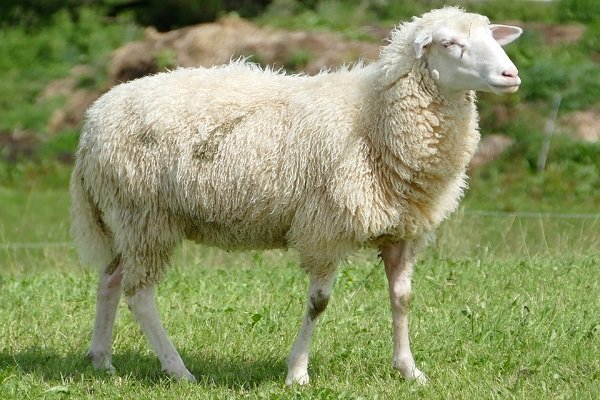
Advantages:
- high quality wool;
- frost resistance;
- good adaptive performance;
- external attractiveness;
- disease resistance.
Disadvantages:
- molting;
- the need to get a haircut 2 times a year;
- complexity of care.
Tajik
This is a type of Soviet breed originally from Tajikistan. Animals have an unattractive appearance: gray wool is twisted into small ropes and hangs from the body. Goats are small in size: males at the withers reach 65 cm, weigh up to 60 kg. Representatives of the Tajik breed have a proportional body, hanging ears and small horns.
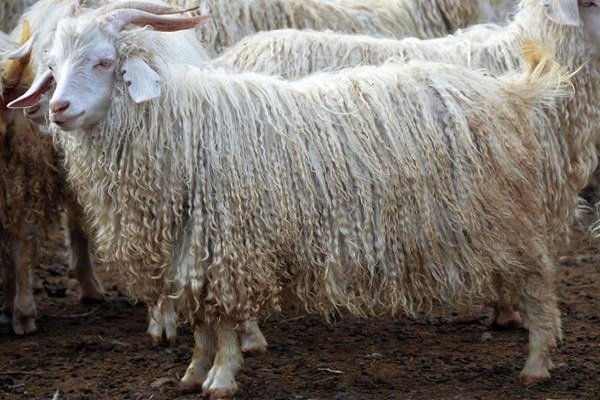
Advantages:
- high productivity;
- frost resistance;
- calm character;
- disease resistance.
Disadvantages:
- untidy look;
- decrease in productivity during molting;
- high price.
Uzbek
The goat was bred in Uzbekistan, hence the corresponding name. Animals have a long body, a massive back and a short neck. At the withers, the male reaches 70 cm, the female – 55 cm. The goat weighs up to 80 kg, the goat – 40 kg.
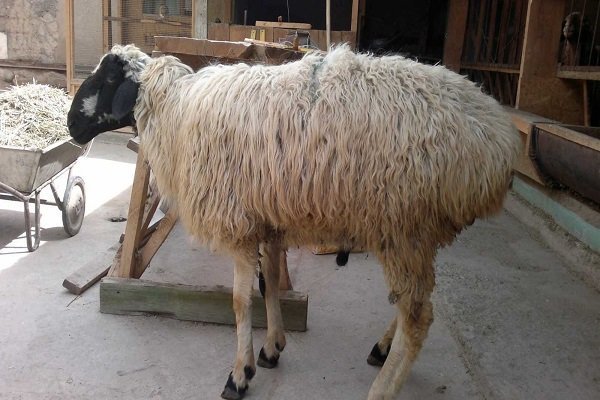
The goat has high quality wool, from 1 animal you can collect up to 3 kg per year. Goats molt seasonally, which reduces the productivity rate.
Advantages:
- high productivity;
- good adaptive performance;
- frost resistance;
- tasty meat;
- strong immunity.
Disadvantages:
- the need to cut 2 times a year;
- complexity of care;
- coarse wool.
Soviet woolen
Goats are native to Kazakhstan. Animals are adapted to harsh climatic conditions and graze on mountain pastures. With small sizes, goats have a massive physique, long hair, which hangs from the body with uneven tassels 18-22 cm long.
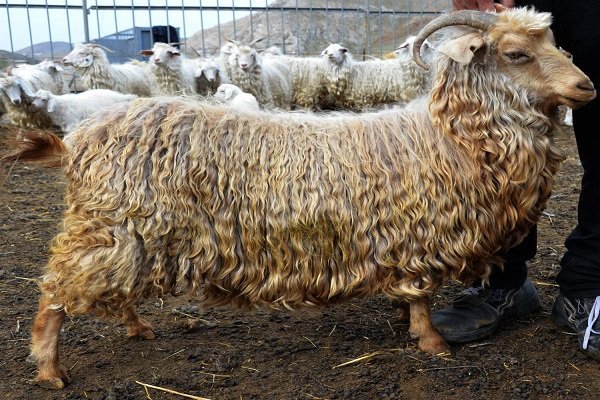
The fertility rate is moderate. For 1 lamb, the female brings 1-2 kids. But the fortress of wool reaches 12-15 kg.
Advantages:
- frost resistance;
- soft, pleasant to the touch wool;
- strong immunity;
- high productivity;
- complaisant character.
Disadvantages:
- low fertility;
- features of care;
- unaesthetic appearance.
Comparative table of wool goats
Goat wool is used for warming clothes, creating wardrobe items. Its quality depends on many indicators, which is important to consider when choosing a breed for breeding.
Breed name Male/female weight, kg Productivity per year, kg Wool length, cm Soviet woolen
65/40
2-3
18-22
Tajik
60/45
5
12-14
Uzbek
80/40
3
14-16
Angora
70/60
3
12-20
Tuva
60/40
1,5
17-22
British Angora
not specified
2-3
15-22
Meat
Goats of this direction give high quality meat. Goat meat is tender, tasty and juicy, there is no specific smell. Meat animals are bred for slaughter; for goat breeders, this is the main source of income. Before choosing, check out the most popular breeds.
Boer
This is a South African goat breed with a hook-nosed muzzle, long body and thin limbs. Animals have a powerful chest, well-developed muscles. The weight of males reaches 135 kg, females – 100 kg. Goats of white color with brown spots on the head, neck, chest.
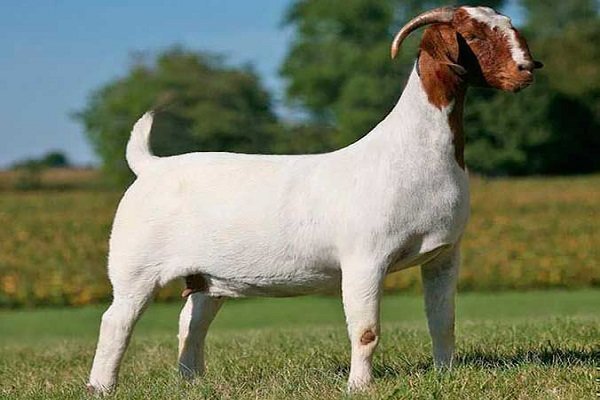
Boer goats have tender, lean and juicy meat. Slaughter yield is 55-57%. There is no specific smell of the product. In addition to meat, the skin of these domestic animals is highly valued.
Advantages:
- aesthetics;
- fast growth;
- strong immunity;
- high productivity.
Disadvantages:
- long adaptation to cold;
- meticulous hoof care;
- decrease in productivity at the new location.
Greek
This goat with Greek roots comes from the island of Crete. The animal has a long muzzle, an elongated body, erect ears, laid back eyes. Goats are short-haired, have an original color (white, black, brown, gray individuals).
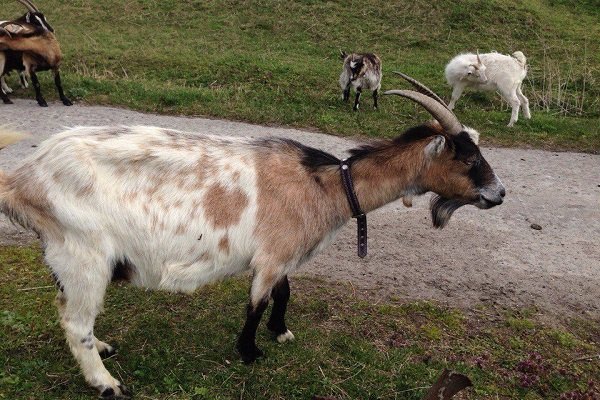
Advantages:
- aesthetics of the breed;
- high productivity;
- strong immunity;
- lack of smell in milk and meat.
Disadvantages:
- eating green spaces;
- the complexity of the purchase;
- high price.
Kiko
These domestic goats are native to New Zealand. Animals have a large physique, hanging ears, short, but very warm coat. Kozlov is distinguished by a long beard, twisted horns, large dimensions compared to the female. Goats are smaller, have a good maternal instinct, bring up to 2-3 cubs in lambing.

Goats are highly valued for their delicious, dietary meat, which is used to prepare gourmet dishes. In terms of profitability, the cost of keeping a pet is more than worth it.
Advantages:
- small sizes;
- good gain;
- strong immunity;
- frost resistance;
- developed maternal instinct.
Disadvantages:
- a small amount of milk;
- the rarity of the breed;
- feeding features.
Black Anatolian
These goats are especially common in the agricultural lands of Russia. Animals are unpretentious in care, quickly adapt to any weather conditions. Goats are black or dark brown with patches.
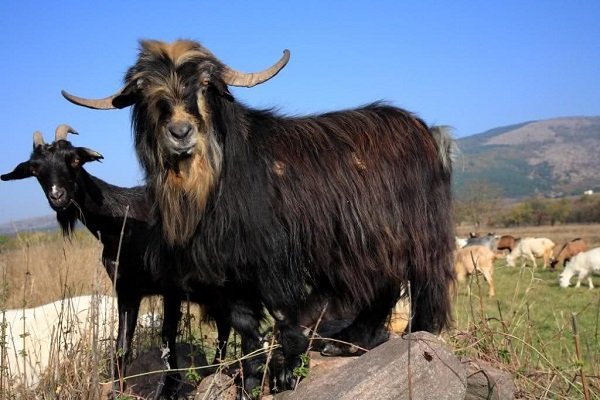
The animal weighs up to 70 kg. With small sizes, kids quickly gain weight, are unpretentious in care. There are one-year-old animals with a weight of 36 kg or when reaching a body weight of 60-75% of the adult rate.
Advantages:
- good immunity;
- tolerance of harsh climate;
- aesthetics of the breed;
- fast weight gain;
- high fertility.
Disadvantages:
- the need for hair care;
- control of the condition of the hooves.
Comparison table of meat goats
Name Weight of males/females, kg Weight of kids, kg Milk production per year, kg Slaughter yield, % Boer meat smell
135/100
4
150
55-57
—
Greek
50/40
3-4
100
57
—
Kiko
to 90
2-3
80
55
—
Black Anatolian
50-60
2-3
80-100
55
—
You can get more information about meat goat breeds here.
Dairy and meat
This is a compromise option for breeders. Goats provide nutritious milk and dietary meat, which are used for personal needs and for sale as a source of income. Each breed has its own characteristics and performance indicators, which are important to familiarize yourself with before breeding.
Goats are the first animals from which primitive man received hearty and nutritious milk.
barbary
Spotted, short-haired goats are native to India and Pakistan. This is a medium-heavy type of meat and dairy direction. Goats are small in size, attract with their compactness. Adults weigh up to 50 kg (males), 30 kg (females). Up to 1-2 kids are born in lambing.
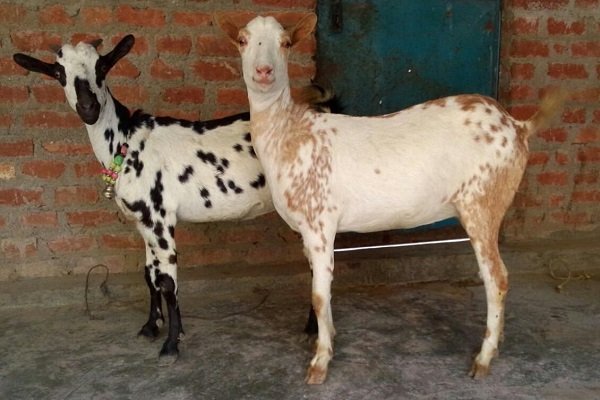
The goat has an original appearance: a Roman profile, erect ears, a straight back and a short tail. The animal has a short white coat interspersed throughout the body and head. The goat is raised for meat production, and also gives delicious milk.
Advantages:
- fast weight gain;
- good adaptive performance;
- tasty meat, fatty milk;
- aesthetics of the breed;
- complaisant character.
Disadvantages:
- high mortality of goats;
- care features.
Nubian
This is an ancient goat breed with a thin frame and long legs. A distinctive feature is the ears hanging on the sides instead of horns. Goats attract with their aesthetics and quick adaptation to new climatic conditions. The color of the animal is brown, there are dark blotches on the sides.

Milk from Nubian goats is tasty and healthy. The daily milk yield is 3-5 liters with a fat content of 4-9% (depending on the diet). There is no specific smell of the product.
Advantages:
- offspring twice a year;
- high milk yield;
- annual lactation period;
- rapid weight gain of young animals;
- fast acclimatization.
Disadvantages:
- harm midges;
- high price;
- whimsical care.
The choice of breeds of domestic goats is huge. The main thing is to decide what the pet is for. In general, with proper care and maintenance, this is a good source of income for agricultural land owners.

